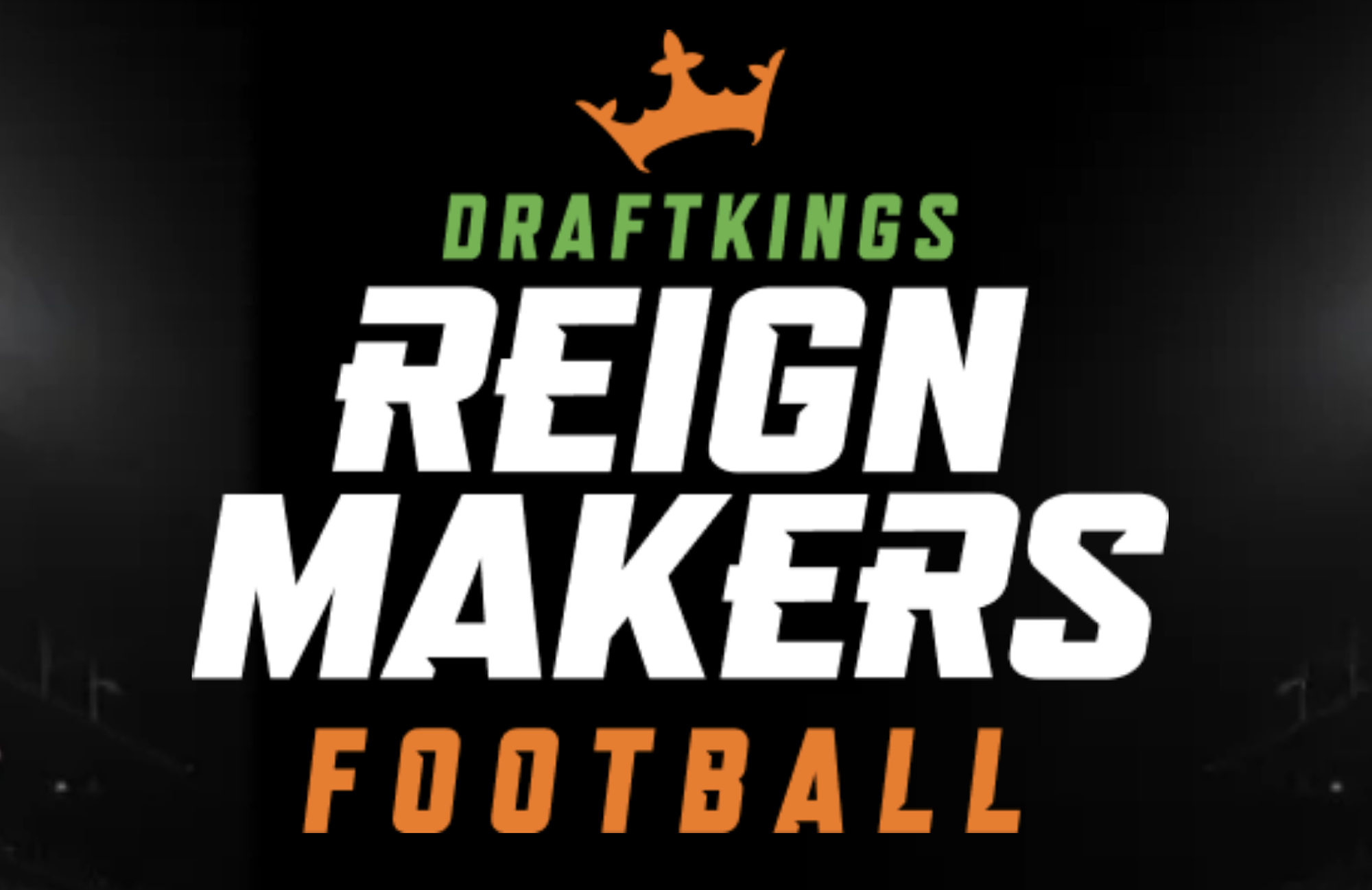NFTs
AI Hype, NFTs, And The PLCC Dilemma

Do retailers want shopper digital twins generated by AI from synthetic data? No.
getty
This week’s retail news held a lot of good news / bad news combinations. It is a continuation of the way things have been going in the industry since at least the beginning of the year, part of what is making it so difficult to get a solid read on consumer spending and how that is translating to retail results.
One new wrinkle is external factors, like how governments are responding to things like continued inflation or rising retail theft. Throw in a throwback to NFT’s
NFT
and the metaverse, which are maybe not as done as I thought they were, and you have this week’s twist and turns in the on-going journey into retail’s future. Let’s dive in!
Retail Economic Indicators
The biggest news of the week was the US Consumer Price Index (CPI), which came in hotter than expected. March 2024 CPI increased 0.4% over February, which had also unexpectedly increased 0.4% over January. At the time, February was written off as a possible outlier. Now that doesn’t seem as likely. Year over year, CPI increased 3.5% in March. One data point may not make a trend, but two could.
There was some good news in there – the food index increased only 0.1% over February, which is a place where consumers tend to really notice inflation. It was really shelter and gas prices that contributed the most to the rise, accounting for over half of the monthly increase. Energy increased 2.1% for the 12 months ending in March, which was the first increase in the year over year figure since February 2023. That’s not good news or bad news, other than that energy prices can be more volatile than other prices. But this read came in before Middle East politics got even more contentious, and that means there is likely more bad news here to come for April.
Retail sales, according to the CNBC/NRF Retail Monitor, grew “at a steady pace” in March. Retail sales were up 2.72% year over year (without any seasonal adjustment), and core retail, which excludes restaurants as well as autos and gasoline, was up 2.92%. As just noted, this was less than inflation, but not by too much. Across all of Q1, core retail sales were up 3.12%. The only thing to be careful of about this number, is that Easter fell in March this year, 9 days earlier than last year, so that “not seasonally adjusted” part actually is a big deal.
In the UK, the BRC-KPMG Retail Sales Monitor also found retail sales making steady progress. Year over year, retail sales were up 2.9%, and Q1 sales growth was overall up 2.1% year over year. Food sales did way better, growing 6.8% year over year in Q1. In comments on the results, the BRC pointed out that most of the growth came from Easter falling early, which means the results aren’t as great as they appear on the surface. Another case of what looks like good news, but maybe has some bad news embedded in the details.
The Federal Reserve Bank of Philadelphia reported on US account-based credit card delinquency rates for Q4 2023, and found that they were the worst they’ve seen since 2012. 3.5% of card balances were at least 30 days past due at the end of December. The share of accounts making minimum payments rose 34 basis points to a series high. About 10% of borrowers have balances greater than $5,200. However, about 1/3 of card holders pay their balance every month. Consumer savings built up over the pandemic seems to be gone. When that happened sometime late last year, the assumption was that consumers would pull back. They did not. Now, credit card limits available to consumers, or at least the disposable income available to pay off credit cards (which could impact discretionary spending) may finally be a dwindling available resource. Have consumers finally hit their limit? That’s the question we seem to keep asking.
Retail Tech & Research Data
In the land of consumer surveys and tech research, BazaarVoice released the results of a survey of 8,000 shoppers, including 2,000 US shoppers. They broke out some US-specific results in their Shopper Preference Report, focused on Return to Office (RTO) and the differences in shopping behavior vs. work from home (WFH). Of the 64% of US consumers that have returned to office, more than half are spending more money in physical stores vs. on online platforms, which is a significant difference against the overall average. I don’t know if this is because RTO shoppers now have less time to shop and so are more laser-focused and convenience oriented, or if it’s the temptation of browsing during the lunch hour. It’s an interesting statistic given how difficult it has been to get consumers to RTO, and the subsequent impact this has had on downtown shopping locations in particular.
Adyen publishes an Adyen Index Australia, in cooperation with the Centre for Economic Business Research (CEBR). They found that 43% of Australian retailers reported falling victim to cyber attacks or data leaks in the last year, which was a 10% increase over 2022. Australian retailers lost an average of AU$2.2 million to fraud in 2023. Only 67% of retailers surveyed said they had effective fraud prevention systems in place. And shoppers notice: 63% of Australian consumers say they feel more unsafe shopping today vs. 10 years ago, due to the increased risk of payment fraud. However, as a reminder, does that mean they are changing their shopping behavior as a result? Most likely not.
In the US, the NRF has been very active in lobbying for a greater crackdown on retail crimes, most especially organized retail crime. In the UK, it looks like the government is starting to put together a response to rising retail theft, organized or not. Some of the things that have been authorized: a standalone offence for assaults on retail workers, expanding the use of electronic monitoring for “prolific” shoplifters, including the greater use of facial recognition, and easier reporting of crime in order to catch more offenders, including enabling small businesses to upload video and photos from their mobile phones. Beyond facial recognition, the expansion also includes plans to consider GPS-monitored curfews and exclusion zones and greater use of technology to make it harder to sell stolen goods online. If an industry can’t fix its problems, then government will – often not necessarily to the industry’s liking. One interesting additional part of the crackdown includes a mandate to design to reduce theft, which could potentially be seen as going after cashierless stores, for example.
AI & Retail
I only came across one article worth mentioning about AI this week, and I really debated whether I was going to mention it at all. But I think it’s important to call out hyperbole as much as positive developments or risks. So I won’t link to it (it just seems piling on, somehow), but I will say that while there are some amazing things that AI can do, whether optimization or GenAI, there are also a lot of things that are required around AI before what it can do becomes useful.
For example, will we see an AI agent that will shop for you this year? We might see some proofs of concept or some pilots, but I highly doubt there will be any AI agent out there in 2024 that will have crossed the chasm into mainstream adoption where you give it some preferences or a description of what you’re looking for, and a budget, and it will go out and buy for you. I can’t even get Amazon to deliver dog food at the frequency I need and the company has perfect visibility into my demand pattern not just over months, but over years. I’ve tried “find it for me” agents in the past and the result has always been “meh”. Part of it may be the thrill of the hunt and losing out on that part of the experience. Part of it may be FOMO – that’s great that you found this cool thing, but what did the selection pool look like? And part of it may be a lack of transparency around the results themselves – why did you pick this thing? Which part of my criteria were you using the most (and do I need to tweak it)? That’s a lot to overcome in the next 8 months.
Will we see personalized storefronts driven by AI in 2024? No. And not because AI couldn’t come up with what needs to be personalized, but because you have to significantly componentize and attribute your website and all of your products to be able to actually execute on a recommendation like that, whether made by AI or otherwise. It’s one thing to reorder your search results to present a list of products in an order that is “personalized”. It’s another thing entirely to rebuild the order or emphasis of product description, ratings or reviews, product images, similar products, etc. I know this is hard because you don’t really need AI to do it if you wanted to, but you do have to have an eCom platform capable of supporting that kind of on-the-fly rebuild, either as the shopper logs in or as they spend more time on the site. And even if that existed today, most retailers are on older eCom solutions precisely because upgrading can be hard.
Will personalization get better with AI? Probably. I still maintain there is a huge difference between “personalized” and “relevant”. We have not achieved parity between the two, even with AI. AI might be good at divining patterns of behavior that swing the needle over more to “relevant” by being able to better identify context and timing impacts. But are retailers going to create and track shopper digital twins? That sounds like a PII (personally identifiable information) and privacy nightmare.
No retailer wants to know absolutely everything about a consumer, because that means they have to protect all that data. What retailers really want is the minimum amount of personal data required to increase your spend with them. A laugh out loud moment from the article that inspired this whole section: “Retailers and CPG brands already are experts at leveraging shopper analytics and purchase data to present consumers with personalized offers and coupons.” Cry-laughing, seriously. Some of them are getting better, but I’ll just mention that within the same article, the author pointed out that we still live in a land where online ads continue to follow you around for things you already bought. Yes, experts indeed.
I will give one point of credit. AI to summarize reviews is indeed here. And what’s fascinating to me is to point this out to non-industry friends and family, and have them know exactly what I’m talking about (Amazon’s review summaries are great), and still miss the fine print underneath that says the summary was generated by AI. They use it, they like it, they don’t even know how it came to be – and it’s useful, so they don’t really care. Summarization of just about anything is an excellent use of GenAI, and I expect we’ll see more of that in 2024.
But how do you know when AI commentary is total hype? Try this quote: “Using predictive synthetic data, a retailer could predict that a shopper who buys Starbucks ground coffee at Safeway on a Tuesday is also likely to buy Kerrygold butter in the same shopping trip – and could, for example, send them a mobile coupon while they’re in the store. And since synthetic data is anonymized, they could do this without compromising consumer privacy.”
So much to unpack. If the shopper is already likely to buy the butter, why send a coupon for it, first of all? And AI platforms are talking about synthetic data because they’ve already run out of human-generated data of any quality to include in the creation of their LLM’s. Retailers should not be using synthetic data for anything except diluting their results. And why would you need to anonymize synthetic data? It’s made up. That’s the point. There better not be any PII in there because it is supposed to be generated data that only looks like real personal data. You use synthetic data (theoretically – no one has proven that this is not actually “the computer science equivalent of inbreeding”) to create models. You use your own real-world data to train the model. You should not be mixing the two.
Finally, there was this nugget: “Retailers, facing stiff competition and operating on razor-thin margins, have always been early adopters of futuristic technologies.” I completely and utterly disagree. Retail is famous for being laggard technology adopters. The last twenty-five years have been a ringside seat to consumers adopting technology at a far faster pace than retailers, and watching retailers figure out what to do about it. I still encounter retailers who don’t want to give their store associates mobile devices because they are “distracting” and “get in the way of selling”. It is those razor-thin margins that exactly create an anti-innovation environment. Retailers can’t afford to take big risks. They don’t have the margin to cover the nine misses that are required to get that one innovative hit. Some are fast followers. But when it comes to innovation, that’s as close as you’re going to get.
Retail Winners and Losers
Yes, I just said that in general, retailers are not innovative. The economics of the industry are stacked against them when it comes to taking big, innovative risks. However, not all retailers are laggards when it comes to adopting something new. One immediate example: Wow Bao. The Asian fast-casual restaurant has been experimenting with NFT and metaverse crossovers. The company has tied them into its “Hot Buns Club” rewards program. The metaverse experience is in Roblox, where Wow Bao is hosting a Dim Sum Palace, complete with a DJ and a dance floor, as well as exploratory areas within the building, including the Steam Lounge and a speakeasy. Hidden inside the club is a free avatar head accessory. If they connect their Roblox account to their loyalty account, they can claim the accessory as a digital item, along with getting entered to win free bao for a year and receiving a “CollectaBao” NFT. Starbucks also recently revamped their NFT program – basically switching platform providers – so I guess there is enough activity out there to keep a loyalty ecosystem alive, at least.
And, as another proof point around the dangers of generalization, probably the next biggest news of the week was the announcement of a new innovation collaboration (W23 Global Venture Fund) between retail giants Tesco, Ahold Delhaize, Woolworths Group, Empire Company Ltd (Sobeys), and Shoprite. This global effort will focus on start-ups and “scale-ups” that will enhance customer experiences in store and online. Tesco alone will contribute the equivalent of $25 million over five years. This news comes on the heels of announcements in 2023 that retailers like Walmart and Target were scaling back on innovation labs or their equivalent.
These kinds of investments come and go in a periodic cycle, and this venture fund announcement probably signals the kick-off to the next round of investing. The challenge with these funds is getting the innovation back into the enterprise. Setting up a separate entity helps keep “we already tried that” out of the house, but it also makes it harder to spur adoption back into the funding enterprise. $5 million per year is chump change to someone like Tesco, and yet even if you multiply by 5, that’s definitely not enough to fund the next AI unicorn or anything. We shall see!
Finally, we’ll wrap with a topic that I would argue is not innovative at all: private label credit cards (PLCC). However, I will be the first to admit that I don’t really understand them. My closest experience with PLCC was in the dimming days of Montgomery Wards. I was a consultant at the time, working a project for Wards. The company had just sold off its PLCC business, in what was possibly the last ditch effort to get enough cash to last through the transformation its leaders were trying to implement. But without that cash cow, there was nothing left – the real estate was gone, the brand cachet was gone, and now this last profit center was gone. The technology was so old they couldn’t even find spare parts for the hardware any longer, and rooms full of aging Cobol programmers declared that they didn’t see anything wrong with the spaghetti of tech that ran the business – and was incapable of running on anything else.
So, intrinsically I knew losing the PLCC business was bad, no matter what price they got for it, and I knew that likely the reason why it made money was because its consumers were poor and paid late often and racked up high interest rates. Fast forward to today, interest rates are high, but they’re high because core rates are high. PLCC makes money on fees – the kind of fees that President Biden has made a point of targeting. On May 14, late fees will be capped at $8 per month (compared to an average of $32 today).
This is expected to squeeze department stores, which rely heavily on PLCC. Specialty retailers will feel the pinch too, but it’s expected that department store will really take the hit, as their revenue is already under pressure from more careful consumer spending. Macy’s and Nordstrom’s average 3% of revenue from their PLCC programs. Kohl’s, Macy’s, and Target all reported falling credit card revenue for 2023/24. With the rise of Buy Now Pay Later, is this the end of PLCC? Certainly, any consumers looking to save money are going to eye the 29.33% average interest rate on a retailer issued card vs. the average of 20.75% across all US credit cards. It could be the future is more about paid loyalty programs – with Target launching a paid tier to its Circle program, it will be interesting to see if the Red Card credit card business goes to the wayside as a result.
The Bottom Line
The amount of oxygen being sucked up by AI hype is starting to make people dizzy, and that’s not a good thing for retailers trying to figure out where to invest. Beware people hawking shiny objects – from the early days of my time at RSR we believed in and emphasized pragmatism over hype. Retailers can’t afford to take big risks. Even Nike, perennially tagged as an innovator, is still eating crow over its decision to de-emphasize wholesale, and saw its sales tank as a result. Their apology tour continues.
That said, I’m always happy when something that seems like it could be pretty cool – like NFT-based loyalty programs that tie into virtual experiences – outlasts its oxygen deprivation phase. And I think the more that industry experts, yes like me too, help outline exactly where to look for benefits, the easier it will be to persuade companies to take more (more informed) risks.
It’s needed. Consumers aren’t going to wait around. They expect technology as part of their shopping experience, and they expect a seamless experience however they choose to engage. Now, if we could just figure out what those pesky consumers are going to do next, then we could be better prepared to support their expectations.
Wait, isn’t that what AI is supposed to do?
Note: this article has been updated to clarify the report published by the Federal Reserve Bank of Philadelphia on US account-based credit card delinquency rates.
NFTs
RTFKT Announces Project Animus Reveal, Launches Egg Unboxing Event Amid Mixed Reactions | NFT CULTURE | NFT News | Web3 Culture

RTFKT, the innovative creator-led company renowned for its cutting-edge sneakers and metaverse collectibles, has officially unveiled its highly anticipated collection, Project Animus. This project marks a significant milestone in RTFKT’s journey, introducing a new dimension to its digital universe after a long period of development. However, the initial market response has been disappointing, with the revealed Animi trading at a floor price of 0.05 ETH, significantly lower than the eggs’ floor price of 0.09 ETH.
The Genesis of the Project Animus
Initially introduced in October 2022, Project Animus introduces a unique ecosystem of digital creatures called Animi. These Animi are designed to enhance Clone X’s avatars, offering an immersive and engaging experience for the community. The recent reveal showcased a diverse range of Animi species, each with distinct design traits and elemental attributes, breaking away from traditional trait-based rarity systems.
A New Digital Frontier: The History and Evolution of Project Animus
The Animus Project is RTFKT’s latest intellectual property, promising to revolutionize the NFT space with its unique digital creatures. The journey kicked off on October 8, 2022, with an interactive teaser event called “The Eggsperience.” This livestream event allowed attendees to explore a virtual Animus Research Facility, generating intrigue and excitement among the community.
Renowned artist Takashi Murakami played a significant role in the project, revealing the first Murakami-themed Animus creature, Saisei, on April 30, 2023. This collaboration added a layer of artistic prestige to the project, further elevating its status within the NFT community.
Animus Egg Incubation: A Journey from Egg to Animi
Clone X NFT holders had the opportunity to claim an Animus Egg until March 1, 2024. This was followed by the Animus Egg Hatching event, which ran from May 7 to June 4, 2024. During this period, holders of several RTFKT NFTs, including Clone X, Space Pod, Loot Pod, Exo Pod, and Lux Pod, were able to use a points-based system to increase their chances of hatching rarer Animi. The limited supply of Project Animus Eggs is capped at 20,000, with no public sale planned.
Mixed market reception
Despite the excitement and innovative features, the market reaction to the reveal of Project Animus has been lukewarm. Animi is currently trading at a floor price of 0.05 ETH, significantly lower than the eggs’ floor price of 0.09 ETH. This discrepancy has led to disappointment among some collectors who had high expectations for the project.
What Awaits Us: The Future of Project Animus
Following the reveal, RTFKT plans to release a collection of exclusive Animus Artist Edition characters. Holders of Clone X Artist Edition NFTs are guaranteed to get one of these special editions. The distribution will include 88 Special Edition Animus, with 8 Mythic (Dragon Sakura), 40 Shiny, and 40 Ghost Animus. The odds of receiving a Special Edition Animus are the same for all Eggs hatched, regardless of the points accumulated.
The remaining Animus characters will be distributed among unhatched Eggs, encompassing Special Edition Animus, as well as Cosmic Animus and Murakami Element from Generation 1, Generation 2, and Generation 3.
Conclusion
RTFKT’s Project Animus represents a bold step forward in the NFT space, combining cutting-edge technology with artistic collaboration to create an immersive and innovative digital ecosystem. However, the initial market reception highlights the challenges of living up to high expectations in the ever-evolving NFT landscape. As the project continues to evolve, it promises to deliver unique experiences and opportunities for its community, solidifying RTFKT’s position as a leader in the metaverse and digital collectibles arena.
Summary: RTFKT has unveiled Project Animus, introducing a unique ecosystem of digital creatures called Animi designed to enhance Clone X avatars. Despite the excitement, market response has been mixed, with Animi trading at a lower floor price than eggs. The project kicked off with an interactive event in October 2022, featuring collaborations with artist Takashi Murakami. Following the reveal, RTFKT will release special edition Animus characters. The total supply of Animus Eggs is limited to 20,000, with no public sale planned.
NFTs
The Olympics have reportedly ditched Mario and Sonic games in favor of mobile and NFTs

The long and historic partnership between Nintendo and Sega to create video games for the Olympics reportedly ended in 2020 as event organizers sought opportunities elsewhere.
Lee Cocker, who served as executive producer on several Mario & Sonic Olympics titles, said Eurogamer the International Olympic Committee let the licensing agreement lapse because it “wanted to look at other partners, NFTs and esports.”
“Basically, the IOC wanted to bring [it] “Turn inward and look for other partners so you can get more money,” Cocker added.
The 2024 Summer Olympics kicked off in Paris last week, but there were no Mario & Sonic games available in time for the event to begin – the first time this has happened since the original release in 2007 to coincide with the 2008 Beijing Summer Olympics.
Over the past two decades, there have been four Mario and Sonic adaptations for the Summer Olympics, as well as two for the Winter Olympics.
This year, instead of a Nintendo/Sega title, the IOC released Olympics Go! Paris 2024, a free-to-play mobile and PC title developed by nWay, which has worked on several Power Rangers games.
Olympics Go! allows players to compete in 12 sports and unlock NFTs from the Paris 2024 digital pin collection.
The original Mario & Sonic at the Olympic Games was announced in March 2007 and marked the first time the two mascots – once archrivals in the console wars of the 1990s – appeared together in a game.
NFTs
DraftKings abruptly shuts down NFT operation, leaving collectors panicking over vast holdings of digital tokens

DraftKings, the daily fantasy sports and sports betting company, abruptly shut down a program called Reignmakers on Tuesday, posting a notice on its website and associated app and sending a mass email to some subset of its user base. Reignmakers, which the company launched in 2021, offered pay-to-play competitions in NFL football, PGA Tour golf and UFC mixed martial arts. The decision to eliminate the entire program, DraftKings says, was not made lightly but was forced “due to recent legal developments.”
DraftKings has yet to specify what “recent legal developments” are troubling its now-dead Reignmakers product. The company was sued in U.S. District Court in 2023 by a Reignmakers player named Justin Dufoe, who accuses the company of dealing in unregistered securities, taking advantage of relatively unsophisticated “retail investors,” and failing to market and support Reignmakers to the degree necessary to return to its users the financial benefits expected. DraftKings filed a motion in September to dismiss Dufoe’s complaint, but that motion was denied on July 2. A scheduling conference was held by the parties on July 29; Reignmakers was permanently shut down on July 30. A DraftKings spokesperson reached by Defector on Wednesday declined to confirm whether Dufoe’s complaint is the “recent legal development” that forced the company’s hand.
Users of the Reignmakers NFL product, who in recent days began murmuring on social channels about a notable lack of DraftKings activity so close to the start of the NFL preseason schedule, were caught off guard and, in some cases, devastated by the news. Members of the DraftKings Discord server, where all Reignmakers-related channels were abruptly shut down and locked following the announcement, flooded a general channel in various states of panic, sharing news, theorizing, lamenting, and, in some cases, openly worrying about whether it would be possible to recoup any decent fraction of the genuinely impressive sums of money they had invested in this DraftKings product.
Reignmakers is nominally a daily fantasy contest—users build lineups of players and then pit those lineups against other users’ lineups for cash prizes—but it’s actually a distributor of nonfungible digital tokens (NFTs), originated and sold by DraftKings, and then frequently resold on a dedicated secondary marketplace also hosted by DraftKings. At the lineup-building level, Reignmakers functions like a card-collecting game, with artificial scarcity driving the prices of the most coveted cards to insane, eye-popping heights. Reignmakers NFTs are tiered and offered in timed drops designed to heighten the sense of scarcity. A user can enter a lower-tier contest using a collection of NFTs that may have cost a few hundred dollars in total (or that were earned by purchasing random packs of NFTs that offer generally low odds of scoring top assets) and throw their lot in with hundreds of casual users competing for relatively unimpressive rewards. Random packs at the lowest tier would have prices as low as a few dollars; mid-tier cards—Star and Elite tiers, I’d guess—could cost a player upwards of $1,000.
But players interested in hunting down the biggest payouts, not just from games but from leaderboard prizes and other assorted prizes, would need to enter higher-tier games, and to enter the higher-tier games, a user’s collection needed to include higher-tier NFTs. DraftKings ensured that these cards were extremely scarce and could only be purchased directly on the marketplace at prices that any reasonable person would consider utterly insane.
For example, the highest-tier Reignmaker contests (called the Reignmakers tier, of course) have in the past been limited to listings with at least two of the highest-tier, rarest NFTs (also the Reignmaker tier) plus three NFTs from the second-highest tier (Legendary). NFTs at these tiers are expensive. Not just expensive in the way that, like, a steak dinner is expensive, but expensive in the way that buying even one of them should trigger a mandatory visit to a gambling addiction counselor, if not sirens and a straitjacket. Back in 2022a Reignmaker-level Ja’Marr Chase NFT from something called the Field Pass Promo Set could be purchased directly from the DraftKings Reignmaker Marketplace for a whopping $32,100.
Reignmakers users purchased NFTs at various levels with the expectation that owning them would convey better odds of winning contests hosted on DraftKings. This was the gamification element of Reignmakers, which emerged several months after DraftKings began trading and minting its NFTs. But as with all NFTs, a very large part of the real appeal for its buyers was the expectation, however insane, that these worthless, virtually worthless, infinitely duplicable digital images would increase in value over time. Now that both the Reignmakers game and the Reignmakers marketplace have been shut down, Reignmakers NFT holders are worried that their investments may have suddenly lost all monetary value. One Discord user described Tuesday as “a bad day to wake up and realize you have $2,000 worth of unopened NFL Rookie Packs”; Another user asked the group if they should expect “a refund” on the $10,000 they’ve already spent on Reignmakers NFTs this year. A pessimistic Reddit user posted tuesday that they would sue DraftKings if they were forced to take a total loss on a Reignmakers NFT collection worth approximately $100,000.
The game (scam?) was built to make numbers like these not only possible, but somewhat easily achievable. A user who intended to compete from a position of strength in multiple overlapping high-profile contests at the same time, and who had been in the blockchain madhouse for a period of years, could easily have spent six figures on Reignmakers NFTs. DraftKings used non-gaming incentives to entice players to spend more and more money, much like casinos give away free suites to players who over-bet on blackjack. Another Reddit user lamented the loss of the additional prizes and ranking bonuses he had hoped to earn in the upcoming NFL season by having a portfolio of NFTs that had reached the highest levels of value and prestige. “I was already loaded up on 2024 creation tokens and rookie debut cards,” said this Reignmakers userwho claimed his portfolio was finally “close to the top 250 overall.”
Dufoe’s complaint says the NFTs minted by DraftKings for Reignmakers qualify as securities, function like securities, and should be regulated as securities. In its motion to dismiss, DraftKings attempted to position its NFTs as game pieces — eye-wateringly expensive, yes, but essentially the same thing as Magic: The Gathering cards or Monopoly hotels. The court, in resolving these arguments, applied what’s known as “the Howey test,” referencing a case from 1946 in which the U.S. Supreme Court established a standard for determining whether a specific instrument qualifies as an investment contract. Judge Dennis J. Casper, in ruling against DraftKings’ motion, concluded that Dufoe could plausibly argue that Reignmakers’ NFT transactions represent “the pooling of assets from multiple investors in such a manner that all share in the profits and risks of the enterprise,” arguing that DraftKings’ absolute control over the game and marketplace effectively binds the financial interests of the company and the buyers, the latter of whom depend on the viability of both for their NFTs to retain any value.
Reignmakers users are different from Monopoly players in at least one crucial way: A person who buys a Monopoly board has no expectation from Hasbro that those little red and green pieces will appreciate in value. It’s a game! No matter what any hysterically conflicted party may say to the contrary, that’s not what NFT collecting is. DraftKings had been selling Reignmakers NFTs for months before they were gamified, and Dufoe, in his complaint, cites public comments made by DraftKings spokespeople that seem to explicitly position Reignmakers NFTs as assets with independent monetary value beyond their utility in Reignmakers contests. Judge Casper, in his ruling on the motion to dismiss, cites a Twitter account associated with a podcast run by DraftKings CEO Matthew Kalish, who in a tweet described NFTs as “the opportunity to invest in startups, artists, operations, and entrepreneurs all at once.” This is probably the kind of thing that NFT peddlers should stop saying. This advice assumes, of course, that NFTs will continue to exist as instruments on the other side of this and other lawsuits.
DraftKings has posted a worryingly sparse FAQ at the bottom of the your ad Tuesday, anticipating but largely failing to address questions from players who see this as yet another in a long line of brutal blockchain rug pulls. In a hilarious reversal of existing Reignmakers policy, Reignmakers users are now allowed by DraftKings to withdraw their Reignmakers NFTs from their DraftKings portfolios and into their personal NFT wallets, where those NFTs will have precisely zero value, to anyone, for the rest of all time. There’s also vague language about Reignmakers users having the option to “relinquish” their NFTs back to DraftKings in exchange for “cash payments,” subject to “certain conditions” and according to an as-yet-unspecified formula that will take into account, among other things, the “size and quality” of a player’s collection.
Reignmakers users are not optimistic. Those who claim to have been victims of other blockchain market crashes are warning their peers on Discord and Reddit to expect payouts that amount to pennies on the dollar; in the absence of any clarifying information, users are unsure whether cashing out their NFTs from Reignmakers to their personal NFT wallets, for reasons that completely pass any and all understanding, would effectively preclude the possibility of delivering these silly digital tokens back to DraftKings. It remains to be seen what exactly DraftKings has in mind with the “certain conditions” attached to the delivery process. There is much that has yet to be resolved. A DraftKings spokesperson contacted by Defector indicated that more time would be needed to answer a list of specific questions and issued a statement noting that it is “in DraftKings’ DNA to innovate and disrupt to provide the best possible gaming experiences for our customers.” The original complaint is embedded below.
Do you know anything about the demise of Reignmakers, either from the consumer side or from the DraftKings side? We’d love to hear from you. Get it in touch!
Recommended
NFTs
There Will Be No More ‘Mario & Sonic’ Olympics Because of NFTs

Nintendo and SEGA have been teaming up with the Olympics for several years now in the popular Mario & sonic in the Olympic Games series, but a new report claims the International Olympic Committee has abandoned the series in favor of new deals in eSports and NFTs.
According to Eurogamer“A veteran behind the series,” Lee Cocker, told the outlet that the IOC chose not to renew its license with SEGA and Nintendo, letting it expire in 2020. “They wanted to look at other partners and NFTs and eSports,” Cocker told Eurogamer. “Basically, the IOC wanted to bring [it] turn inward and look for other partners so they could get more money.”
Mario & Sonic at the Olympic Games is a series that has been running since 2008, with six main games covering the regular and Winter Olympics. In the games, players could control various characters from the Mario and Sonic franchises and compete in Olympic sporting events.
It’s no secret that NFTs are a big part of this year’s Paris 2024 Olympics. Olympics Go! Paris 2024 is a mobile and mobile-connected game your site states that players can “join the excitement of the Paris 2024 Olympic Games with nWay’s officially licensed, commemorative NFT Digital Pins collection honoring Paris 2024!”
As for eSports, Saudi Arabia will host the ESports Olympic Games in 2025. This is part of a partnership with the Saudi National Olympic Committee (NOC) that is expected to last for the next 12 years and is expected to feature regular events.
IOC President Thomas Bach said: “By partnering with the Saudi NOC, we also ensure that Olympic values are respected, in particular with regard to the game titles on the programme, the promotion of gender equality and the engagement with young audiences who are embracing esports.”
In other news, Someone claimed they’re suing Bandai Namco because Elden Ring is too difficult.
-

 News12 months ago
News12 months agoMore Crypto AI Alliances Emerge Following $7.5 Billion Token Merger — TradingView News
-

 News11 months ago
News11 months agoOver 1 million new tokens launched since April
-

 Altcoins11 months ago
Altcoins11 months agoAltcoin Investments to create millionaires in 2024
-

 Memecoins9 months ago
Memecoins9 months agoMemecoins dominate major derivatives in terms of open interest | Flash News Detail
-

 News9 months ago
News9 months agoInvest Now: The Hottest New Cryptocurrencies of August 2024 That Could Skyrocket
-

 Altcoins9 months ago
Altcoins9 months agoOn-chain data confirms whales are preparing for altcoin surge with increased buy orders
-

 NFTs9 months ago
NFTs9 months agoRTFKT Announces Project Animus Reveal, Launches Egg Unboxing Event Amid Mixed Reactions | NFT CULTURE | NFT News | Web3 Culture
-

 Altcoins9 months ago
Altcoins9 months agoHot New Altcoin: Memeinator’s Price Upside Potential in July
-

 Videos12 months ago
Videos12 months agoMoney is broke!! The truth about our financial system!
-

 Memecoins11 months ago
Memecoins11 months agoChatGPT Analytics That Will Work Better in 2024
-

 Altcoins11 months ago
Altcoins11 months agoRender vs. Theta; Which DePIN Altcoin to buy in May
-

 News11 months ago
News11 months ago5 Crypto Airdrops After Notcoin to Watch Out for in June 2024





